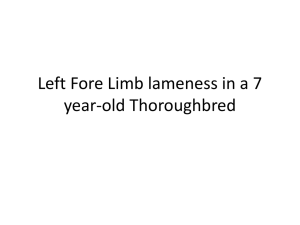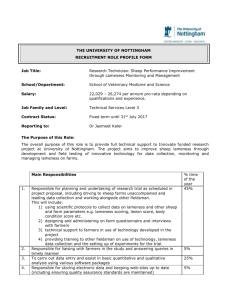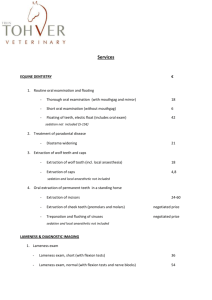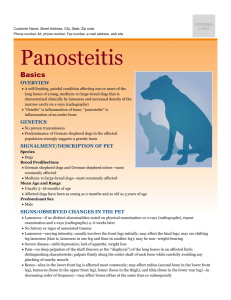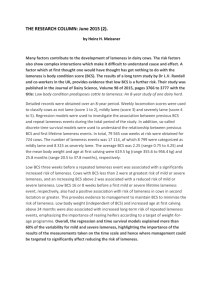Word version
advertisement
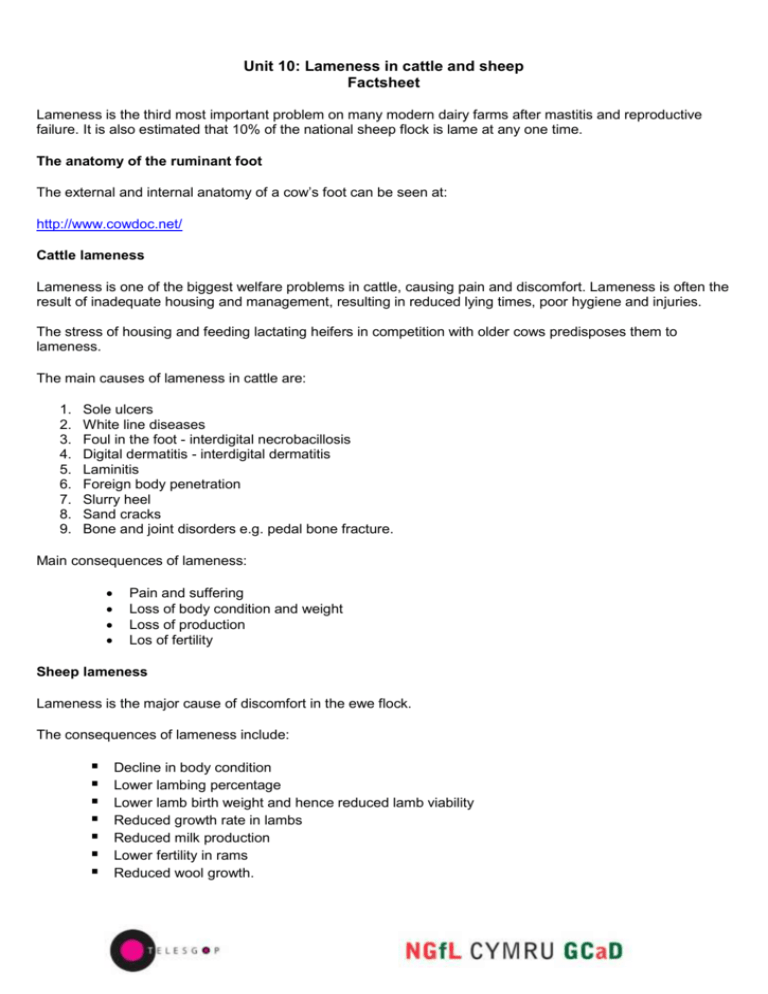
Unit 10: Lameness in cattle and sheep Factsheet Lameness is the third most important problem on many modern dairy farms after mastitis and reproductive failure. It is also estimated that 10% of the national sheep flock is lame at any one time. The anatomy of the ruminant foot The external and internal anatomy of a cow’s foot can be seen at: http://www.cowdoc.net/ Cattle lameness Lameness is one of the biggest welfare problems in cattle, causing pain and discomfort. Lameness is often the result of inadequate housing and management, resulting in reduced lying times, poor hygiene and injuries. The stress of housing and feeding lactating heifers in competition with older cows predisposes them to lameness. The main causes of lameness in cattle are: 1. 2. 3. 4. 5. 6. 7. 8. 9. Sole ulcers White line diseases Foul in the foot - interdigital necrobacillosis Digital dermatitis - interdigital dermatitis Laminitis Foreign body penetration Slurry heel Sand cracks Bone and joint disorders e.g. pedal bone fracture. Main consequences of lameness: Pain and suffering Loss of body condition and weight Loss of production Los of fertility Sheep lameness Lameness is the major cause of discomfort in the ewe flock. The consequences of lameness include: Decline in body condition Lower lambing percentage Lower lamb birth weight and hence reduced lamb viability Reduced growth rate in lambs Reduced milk production Lower fertility in rams Reduced wool growth. The causes of lameness in the ewe flock are: 1. Scald 2. Foot rot 3. White line abscess 4. Contagious ovine digital dermatitis 5. Shelly hoof 6. Foreign bodies 7. Pedal joint abscesses 8. Foot and mouth disease 9. Granuloma 10. Fibroma Prevention of lameness in cattle and sheep Regular foot trimming Foot bathing in either formalin or zinc sulphate solution Prompt diagnosis and treatment Antibiotics to be used only on bacterial causes of lameness Separate the animal from the herd/flock to stop spread, especially with digital dermatitis and foot rot. Treatment of lameness As there are a huge variety of factors that can cause lameness, ranging from nutrition to poor foot trimming, it should be noted that every case of lameness should be examined and treated accordingly. Some tools that are available to the stockperson are: Topical and injectable antibiotics Foot trimming Foot bathing Vaccination as an option against foot rot Good biosecurity - avoid buying in lame animals. Excellent advice is available on the University of reading website: http://www.organic-vet.reading.ac.uk/Cattleweb/disease/Lame/treat.htm
